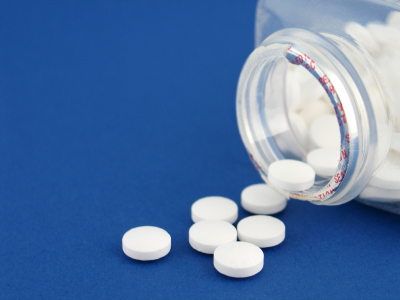NAC Is Not Effective In Children With Trichotillomania As It Is In Adults
N-acetylcysteine (NAC) is a drug available over-the-counter in health food stores that is effective in a variety of disorders, including trichotillomania (compulsive hair-pulling) in adults. Researcher Michael Block of Yale University reports that, in contrast to NAC’s robust effects in adults, the drug was not effective in children with trichotillomania aged 8 to 17. However, behavior therapy has been reported to be effective in both adults and children.
Editor’s Note: Why a drug that is so effective for trichotillomania in adults does not work well or at all in children is not clear. It is even more perplexing given that NAC has shown robust effects on some other childhood disorders, such as irritability and stereotypy in children with autism. However, if this discrepancy and other differences in pharmacological response across demographics are replicated, the reasons for differential response should be investigated.
As many researchers have emphasized, kids are not just shorter adults, but might have entirely different brains that are in a different stage of development. Extrapolating the therapeutic effects that occur in adults to children may not always be a valid strategy.
NAC Improves Irritability and Repetitive Behaviors in Children with Autism
 The antioxidant N-acetylcysteine (NAC), which can be found in health food stores, seems to be effective for irritability and repetitive behaviors in children with autism. In a small controlled study that was published by Hardan et al. in the journal Biological Psychiatry in 2012, 33 mostly male children with autism (aged 3-12 years) received either placebo or NAC at doses of 900mg daily for 4 weeks, followed by 900mg twice daily for 4 weeks, then 900mg three times a day for 4 weeks. Beginning in week 4, the children receiving NAC showed significantly improved irritability scores, and a trend for improvement in repetitive behaviors.
The antioxidant N-acetylcysteine (NAC), which can be found in health food stores, seems to be effective for irritability and repetitive behaviors in children with autism. In a small controlled study that was published by Hardan et al. in the journal Biological Psychiatry in 2012, 33 mostly male children with autism (aged 3-12 years) received either placebo or NAC at doses of 900mg daily for 4 weeks, followed by 900mg twice daily for 4 weeks, then 900mg three times a day for 4 weeks. Beginning in week 4, the children receiving NAC showed significantly improved irritability scores, and a trend for improvement in repetitive behaviors.
Social responsiveness did not improve significantly, but the children receiving NAC did show some improvement in some areas of social behavior, such as social cognition and autism mannerisms.
There were few side effects associated with NAC. The most significant were gastrointestinal side effects, but these were mild, especially when compared with the side effects associated with FDA-approved treatments for autism, such as the atypical antipsychotics risperidone and aripiprazole.
The authors of the study plan to expand their research in a study of more than 100 children with autism.
Editor’s Note: It should we previously summarized this study in the BNN based on research presented by Fung et al. at a meeting of the American Academy of Child and Adolescent Psychiatry two years ago. The study has now been published.
Clarifying the Mechanism of Action of N-Acetylcysteine (NAC)
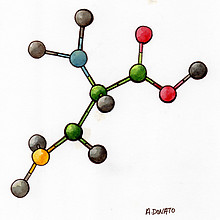 N-acetylcysteine (NAC) is a drug available over-the-counter in health food stores that seems to be effective for a variety of disorders, including depression and many different habits and addictions. Preventing relapse of cocaine abuse is one of its uses. Researcher Kathryn Reissner at the Medical University of South Carolina found that NAC increases the expression of a glial glutamate transporter (GLT-1) that helps clear excessive glutamate in the nucleus accumbens, and that this mechanism is critical to preventing the reinstatement of cocaine self-administration in rodents.
N-acetylcysteine (NAC) is a drug available over-the-counter in health food stores that seems to be effective for a variety of disorders, including depression and many different habits and addictions. Preventing relapse of cocaine abuse is one of its uses. Researcher Kathryn Reissner at the Medical University of South Carolina found that NAC increases the expression of a glial glutamate transporter (GLT-1) that helps clear excessive glutamate in the nucleus accumbens, and that this mechanism is critical to preventing the reinstatement of cocaine self-administration in rodents.
As we have previously described in the BNN, NAC also decreases cued release of glutamate in the nucleus accumbens by potentiating the cystine-glutamate exchanger. This initially increases extrasynaptic glutamate, but subsequently downregulates glutamate release in the nucleus accumbens through actions at an inhibitory presynaptic metabotropic glutamate receptor.
However, the new data indicate that this action at the cystine-glutamate exchanger is not required for NAC’s effects on cocaine reinstatement, but the induction of GLT-1 is. Furthermore, another compound, propentofylline, which increases glutamate GLT-1, is also effective in suppressing cocaine reinstatement. Cocaine decreases a marker of glial activity, glial fibrillary acidic protein (GFAP), in the nucleus accumbens, suggesting that deficient glial functioning and uptake of glutamate could be another target of therapeutics in cocaine addiction.
Editor’s Note: There are also glial deficits in depressed patients, so it is conceivable that NAC’s effect on GLT-1 glutamate clearance is also involved in the antidepressant effects of NAC.
NAC Normalizes Glutamate Levels in Cocaine-Dependent People
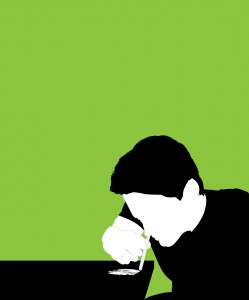 Glutamate is the major excitatory neurotransmitter in the brain, while GABA is the main inhibitory neurotransmitter. Too much or too little of one or the other can lead to an imbalance in neuronal communication. In a 2012 study by Schmaal et al. published in the journal Neuropsychopharmacology, cocaine-dependent patients were found to have high levels of glutamate in the dorsal anterior cingulate cortex. A single administration of N-acetylcysteine (NAC) at a dose of 2400mg lowered these levels.
Glutamate is the major excitatory neurotransmitter in the brain, while GABA is the main inhibitory neurotransmitter. Too much or too little of one or the other can lead to an imbalance in neuronal communication. In a 2012 study by Schmaal et al. published in the journal Neuropsychopharmacology, cocaine-dependent patients were found to have high levels of glutamate in the dorsal anterior cingulate cortex. A single administration of N-acetylcysteine (NAC) at a dose of 2400mg lowered these levels.
Healthy (non-addicted) participants who received the same administration of NAC did not show the same drop in glutamate levels.
The study also observed levels of impulsivity in the patients. Higher baseline levels of glutamate were associated with greater impulsivity, and both higher baseline level of glutamate and greater impulsivity were predictive of a larger drop in glutamate levels following NAC administration.
The researchers suggest that these findings may eventually be used in the treatment of cocaine-addicted people, since abnormal glutamate levels are related to risk of relapse. In drug-dependent rodents, NAC was found to normalize hyper-responsive glutamate release in the nucleus accumbens (the brain’s reward center) and prevent cocaine-reinstatement or relapse.
Editor’s Note: When these data from the lab of Peter Kalivas at the Medical University of South Carolina were initially collected, it was thought that NAC’s effect on a cystine-glutamate exchanger in the nucleus accumbens explained its treatment success, but new data suggest that NAC may actually facilitate glutamate clearance by increasing the number of glutamate transporters in glial cells.
Ginkgo Biloba Improves Tardive Dyskinesia
 Tardive dyskinesia is a sometimes irreversible side effect of antipsychotic treatment, and is characterized by uncontrollable, subtle and spontaneous motor movements, usually of the tongue, mouth, or fingers.
Tardive dyskinesia is a sometimes irreversible side effect of antipsychotic treatment, and is characterized by uncontrollable, subtle and spontaneous motor movements, usually of the tongue, mouth, or fingers.
Extracts of the leaves of the gingko biloba tree contain potent antioxidants. In a study published by Zhang et al. in the journal Biological Psychiatry in 2012, treatment with ginkgo biloba (EGb-761) at 240mg/day for 12 weeks improved tardive dyskinesia more than placebo. Patients with tardive dyskinesia had low levels of brain-derived neurotrophic factor (BDNF) at baseline, and gingko biloba increased these levels. BDNF is important for the production and protection of neurons, and maintaining long-term memory.
The increase in BDNF was correlated with the degree of improvement achieved with gingko biloba in these patients. Different people have different variations in the gene for BDNF. As a result, some people’s BDNF is transported to dendrites and synapses more efficiently than others’. Improvement was greatest in those patients with the most common and best-functioning variant of BDNF, Val66Val, and worst in those patients with the rare and poorest-functioning variant, Met66Met.
Editor’s Note: These findings could be of great clinical importance. Tardive dyskinesia occurred in 20 to 40% of patients with bipolar disorder following treatment with the older “typical” antipsychotics. The incidence is much lower with the newer “atypical” antipsychotics, but having an effective and well-tolerated treatment for this disfiguring side effect is an extra bonus.
Metformin Effective for Treating Antipsychotic-Induced Amenorrhea, Weight Gain, and Insulin Resistance in Women
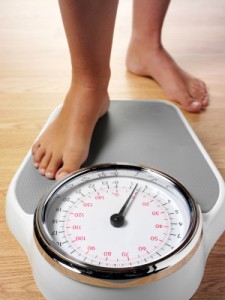 Treatment with antipsychotics often has side effects such as amenorrhea (loss of the menstrual period) and weight gain that make sticking to a treatment regimen difficult for some patients. A 2012 study by Wu et al. in the American Journal of Psychiatry suggests that the drug metformin, often used to treat diabetes, can reverse these changes. The 84 female patients recruited for the study were being treated for a first episode schizophrenia, were on one antipsychotic, and had experienced amenorrhea for several months. They received either placebo or 1000mg/day of metformin in addition to their antipsychotic treatment for six months. Seventy-six women completed the trial.
Treatment with antipsychotics often has side effects such as amenorrhea (loss of the menstrual period) and weight gain that make sticking to a treatment regimen difficult for some patients. A 2012 study by Wu et al. in the American Journal of Psychiatry suggests that the drug metformin, often used to treat diabetes, can reverse these changes. The 84 female patients recruited for the study were being treated for a first episode schizophrenia, were on one antipsychotic, and had experienced amenorrhea for several months. They received either placebo or 1000mg/day of metformin in addition to their antipsychotic treatment for six months. Seventy-six women completed the trial.
Metformin was able to reverse the side effects in many of the women. Menstruation returned in 28 of the patients taking metformin compared to only two patients taking placebo. Among those on metformin, body mass index (BMI) decreased by a mean of 0.93, compared to a mean increase in those on placebo (0.85). Insulin resistance improved in the women on metformin as well.
Editor’s Note: Metformin can also delay the onset of type II diabetes in those in the borderline diabetic range. The weight loss on metformin was not spectacular and other options include the combination of the antidepressant bupropion (Wellbutrin) and the opiate antagonist naltrexone (Revia, 50mg/day), monotherapy with topiramate (Topamax), the fixed combination of topiramate and phentermine (Qsymia), or monotherapy with zonisamide (Zonegran).
RTMS Improves Working Memory In Patients With Schizophrenia
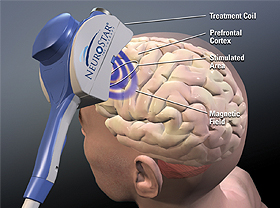 Repetitive transcranial magnetic stimulation (rTMS) may improve working memory in patients with schizophrenia, according to a small study published by Zafiris J. Daskalakis and colleagues in Biological Psychiatry in 2013. Patients with schizophrenia received either 20 Hz rTMS over the left and right prefrontal cortex or a sham treatment, and the rTMS improved working memory on a particular task, the n-back task, wherein patients are asked to recall whether a stimulus they’re currently viewing is the same as the previous one they viewed, or one they viewed several times back. Twenty sessions of rTMS over a period of 4 weeks brought memory back to the levels seen in normal controls.
Repetitive transcranial magnetic stimulation (rTMS) may improve working memory in patients with schizophrenia, according to a small study published by Zafiris J. Daskalakis and colleagues in Biological Psychiatry in 2013. Patients with schizophrenia received either 20 Hz rTMS over the left and right prefrontal cortex or a sham treatment, and the rTMS improved working memory on a particular task, the n-back task, wherein patients are asked to recall whether a stimulus they’re currently viewing is the same as the previous one they viewed, or one they viewed several times back. Twenty sessions of rTMS over a period of 4 weeks brought memory back to the levels seen in normal controls.
Editor’s Note: Since many patients with bipolar disorder also have deficits in prefrontal-based memory and performance even when euthymic, it will be important to see if rTMS would also be helpful in these patients. RTMS at 20 Hz increases neuronal activity as measured by PET scan of the prefrontal cortex and other regions of the brain, and this lasts for at least 48 hours after each treatment.
Since many patients with schizophrenia and bipolar disorder show deficits in prefrontal activity at baseline, the normalization of these alterations could relate to the memory improvement. This proposition could be tested relatively easily.
Oxytocin Improves Social Cognition In Schizophrenia
 Researcher Josh Woolley and colleagues at the University of California, San Francisco have found that intranasal oxytocin (at doses of 40 IU) improved social cognition in patients with schizophrenia when compared with placebo. Oxytocin is a hormone that facilitates social bonding. Social cognition refers to the way we understand what emotions other people are communicating through facial expression, voice, etc.
Researcher Josh Woolley and colleagues at the University of California, San Francisco have found that intranasal oxytocin (at doses of 40 IU) improved social cognition in patients with schizophrenia when compared with placebo. Oxytocin is a hormone that facilitates social bonding. Social cognition refers to the way we understand what emotions other people are communicating through facial expression, voice, etc.
Interestingly, less complicated aspects of social cognition like recognizing affect and distinguishing between sincerity and sarcasm were not affected by the oxytocin treatment. However, more complex types of social inference (such as decoding whether an actor intended sarcasm versus telling a white lie) were substantially improved. These tasks evaluate “theory of mind”—the ability to attribute mental states to oneself and others, and to recognize that another person’s mental state may be different from one’s own. These abilities are sometimes lacking in those with schizophrenia and other disorders, such as autism. Given that these abilities have been related to real world social functioning, Woolley and colleagues suggest that oxytocin could, for example, help these individuals to make more friends.
Adjunctive Topiramate Is Effective In Schizophrenia
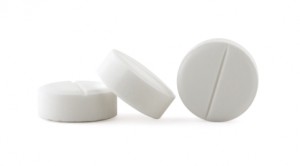 Many patients with schizophrenia do not reach full remission on antipsychotic drugs alone. The anticonvulsant drug topiramate (Topamax) has shown some promise as an adjunctive treatment for schizophrenia. To clarify the results of studies of topiramate, researcher Christoph Correll and colleagues performed a meta-analysis of nine randomized, placebo-controlled clinical trials of the drug. They found that when topiramate was added to antipsychotic treatment, it improved both positive and negative symptoms of schizophrenia, and it also led to reduced weight.
Many patients with schizophrenia do not reach full remission on antipsychotic drugs alone. The anticonvulsant drug topiramate (Topamax) has shown some promise as an adjunctive treatment for schizophrenia. To clarify the results of studies of topiramate, researcher Christoph Correll and colleagues performed a meta-analysis of nine randomized, placebo-controlled clinical trials of the drug. They found that when topiramate was added to antipsychotic treatment, it improved both positive and negative symptoms of schizophrenia, and it also led to reduced weight.
Editor’s Note: Topiramate might also be useful for patients with schizophrenia who have the common comorbidities of alcohol and cocaine abuse, since in other studies of patients with these primary disorders, topiramate was helpful.
Aspirin added to Regular Treatment Reduces Symptoms of Schizophrenia
Most drugs used to treat schizophrenia target dopamine and serotonin receptors in the brain. While these are effective in many patients, relapse is common and side effects can be severe. Researchers are looking for ways to target other mechanisms that cause schizophrenia, and inflammation seems to be one of these. There is evidence that a treatment as simple as aspirin, when added to regular treatment with antipsychotics, can improve schizophrenia by targeting inflammation.
In a 2010 study by Laan et al. published in the Journal of Clinical Psychiatry, patients with moderate or severe schizophrenia were given either placebo or aspirin (acetylsalicylic acid, 1000mg) in addition to their regular treatments every day for three months. The patients who received aspirin showed a significant reduction in the positive symptoms of schizophrenia, and to a lesser extent the negative symptoms, compared to those who received placebo. Cognitive function was not improved. The effect size (Cohen d) for the total scale score was 0.5, which is considered a “medium” effect and one that is clinically relevant.
The reductions in symptoms were greater in those patients who had more altered immune function.


